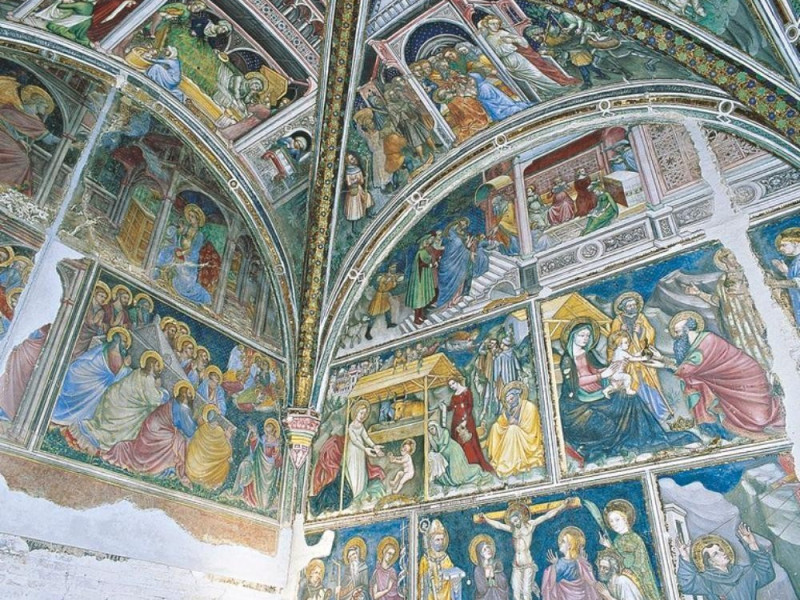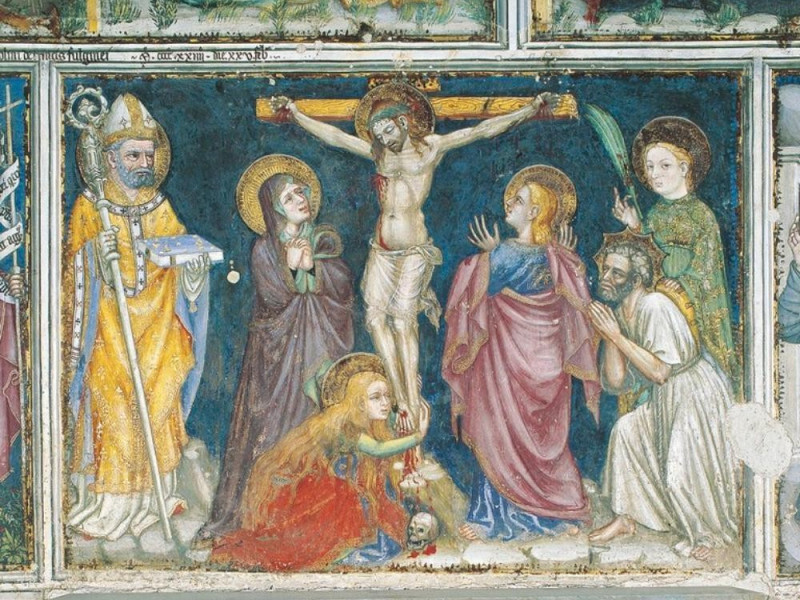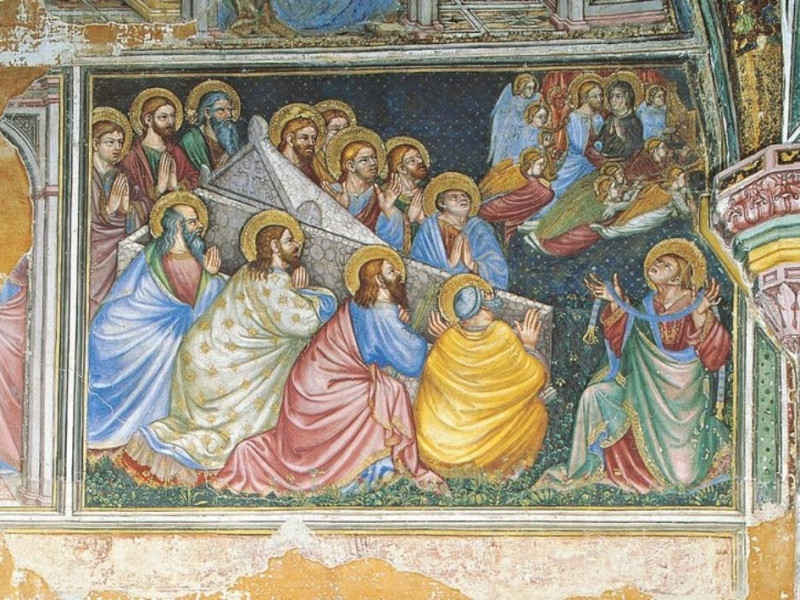Luogo - Point of interest
Palazzo Trinci
Where
Piazza della Repubblica, Foligno (Perugia)
Trinci Palace
Palazzo Trinci stands on the northern side of Piazza della Repubblica, which is the ancient Platea Magna—great arena—and the beating heart of the town of Foligno.
This is the most representative edifice of the town. It was built by the Trinci family and decorated by one of the greatest interpreters of the Italian Late Gothic, Gentile da Fabriano.
It is almost an obligation to visit its premises to admire the marvelous rooms, the chapel of the palace and the important archaeological and historic-artistic collections it has hosted since 2000.
Having already been the seat of the Signoria—lordship—of the Trinci family—who ruled the town from 1305 to 1439—this palace was built and richly decorated by restructuring a number of pre-existing medieval edifices, between the end of the 14th and the beginning of the 15th century as desired by Ugolino Trinci.
With the end of the rule of the Trinci and the annexing of Foligno to the Papal State, the palace became the See of Papal Legates, maintaining this function until the Unification of Italy, when it was designated for offices. With the loss of its original function, the palace was adapted in various ways, and also modified as a consequence of the damages it suffered after the earthquake and the Second World War bombings. The edification of the neoclassical façade dates from the 19th century. The passageway on the right, which connected the palace with the houses built above the minor nave of the cathedral, preserves a masonry facing and a mullion window that dates from the beginning of the 15th century. Other architectural bodies from the same period are visible in the court, which has a brickwork porch with cross vaults. The staircase on the right leads into the palace, now seat of the Museum of the town.
On the first floor there is the Gothic Staircase that once was uncovered, in the open air, which is all decorated with geometrical designs. On the second floor there is the Sixtus IV Hall, a vast hallway decorated with frescoes and ornamental motifs, with a wooden ceiling with the Coat of Arms of the Pope inlayed at its center. At the end of the room there is the chapel frescoed by Ottaviano Nelli, with the Scenes from the life of the Virgin, which can be dated from 1424. In the nearby Loggia there are frescoes with the Scenes from the foundation of Rome—these are not all complete, in fact, in some areas they remain partially designed as a Sinopia—allusively comparing Roman power with that of Foligno. From the Loggia there is access to the Liberal Arts and the Planets Room, where the Trivium and Quadrivium Arts, Philosophy and The Seven Planets, to which The Ages of Man and The Hours of the Day, are connected. These personifications illustrate the elaborated allegorical concept in which life is divided into seven stages, each one influenced by a planet; and a learning discipline corresponds to every age. Furthermore, the frescoes in the passageway, connecting the palace with the Duomo, return to the theme of The Ages of Man. On the front wall The Heroes of Antiquity and The Brave Men of the Medieval Tradition are depicted. The Room of the Giants, to which access is secured through the room behind the Liberal Arts and the Planets Room, is instead frescoed with the colossal figures of The Heroes from the History of Rome, from Romulus to Trajan, all dressed—as per Renaissance customs—in medieval clothes. Their names are written, together with poems by Francesco da Fiano in Latin, below the figures.
From a recent discovery of an 18th century pocketbook, a transcription of an ancient document of 1411, it clearly shows that the frescoes of the Loggia, the Room of the Liberal Arts and the Planets and the Room of the Giants were commissioned to Gentile da Fabriano, who executed them with the cooperation of some of his pupils.







